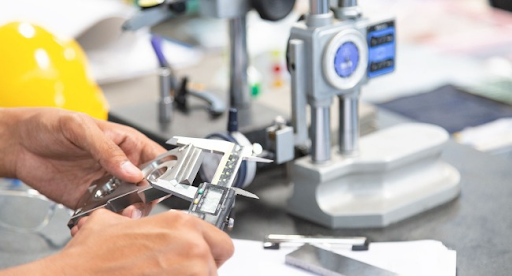Plastic sheets are ubiquitous in various industries, serving critical roles in applications ranging from packaging and construction to automotive and electronics. Ensuring that these plastic sheets meet stringent quality standards is crucial for both manufacturers and end-users. This article delves into the production process of plastic sheets, the importance of dimensional inspection, and the key quality control measures necessary to maintain high standards.
The Production Process of Plastic Sheets
The production of plastic sheets involves several stages, each critical to achieving the desired properties and dimensions. The process typically begins with the selection of raw materials, such as polyethylene, polypropylene, or PVC, depending on the intended application. These materials are chosen for their unique properties, such as flexibility, durability, and resistance to chemicals and environmental factors.
The selected raw materials are then subjected to processes like extrusion or calendering.
Extrusion
In extrusion, the raw material is melted and forced through a flat die, forming a continuous sheet. The sheet is then cooled and cut to the required dimensions. The extrusion process allows for the production of sheets in various thicknesses and widths, making it versatile for different applications.
Calendering
Calendering, on the other hand, involves passing the material through a series of rollers to achieve the desired thickness and smoothness. This method is particularly suitable for producing thin and smooth plastic sheets, commonly used in packaging and decorative applications.
Throughout the production process, maintaining consistent quality is essential. Variations in temperature, pressure, or raw material composition can lead to defects, such as warping, uneven thickness, or surface imperfections. Therefore, manufacturers implement stringent process controls and monitor key parameters to ensure that the plastic sheets meet the specified standards.
Ensuring Dimensional Accuracy: The Role of Dimensional Inspection
Dimensional inspection is a critical step in the quality assurance process for plastic sheets. This inspection ensures that the sheets meet the specified dimensions, including thickness, width, and length, which are crucial for their intended application.
Dimensional Inspection typically involves the use of precision measurement tools, such as calipers, micrometers, and laser scanners. These tools measure the dimensions of the plastic sheets with high accuracy, ensuring that they meet the required tolerances.
Thickness Measurement
Thickness measurement is particularly important for plastic sheets, as variations can affect their performance and suitability for specific applications. For example, in the automotive industry, plastic sheets used for interior panels must have consistent thickness to ensure proper fit and finish. Similarly, in the packaging industry, thin sheets must meet strict thickness requirements to maintain the integrity of the packaging.
Laser scanners are commonly used for thickness measurement, as they provide non-contact measurement with high precision. These scanners can quickly measure the thickness of the entire sheet, identifying any variations that may have occurred during production.
Width and Length Measurement
In addition to thickness, the width and length of plastic sheets must also be accurately measured. Variations in these dimensions can lead to issues during the subsequent processing or assembly stages. For example, if the width of a plastic sheet is too wide, it may not fit into the designated space during assembly. Conversely, if it is too narrow, it may not provide adequate coverage.
Dimensional inspection tools, such as calipers and laser scanners, are used to measure the width and length of plastic sheets with high accuracy. These measurements are compared against the specified tolerances to ensure that the sheets meet the required dimensions.
Quality Control Measures
Beyond dimensional inspection, several other quality control measures are implemented to ensure that plastic sheets meet the required standards. These measures include visual inspection, mechanical testing, and material analysis.
Visual Inspection
Visual inspection involves examining the surface of the plastic sheets for defects, such as scratches, bubbles, or discoloration. These defects can affect the aesthetic appeal and performance of the sheets, particularly in applications where appearance is important, such as in the automotive or consumer goods industries.
Mechanical Testing
Mechanical testing evaluates the strength, flexibility, and durability of the plastic sheets. This testing is essential to ensure that the sheets can withstand the intended use without cracking, tearing, or deforming. Tests may include tensile testing, impact testing, and hardness testing, depending on the specific application requirements.
Material Analysis
Material analysis involves testing the composition of the plastic sheets to ensure that they meet the specified material properties. This analysis may include testing for chemical resistance, UV stability, and thermal properties, depending on the application. Ensuring that the material properties meet the required standards is crucial for the performance and longevity of the plastic sheets.
Conclusion
From production to inspection, ensuring that plastic sheets meet industry standards is a comprehensive process that requires attention to detail at every stage. Dimensional inspection plays a crucial role in maintaining the accuracy of the sheets, while other quality control measures ensure their overall performance and durability. By implementing these stringent quality assurance processes, manufacturers can produce high-quality plastic sheets that meet the needs of various industries, ensuring their reliability and effectiveness in a wide range of applications.

